HOW WE SHARE OUR FUTURE
- REPUBLISHED VERSION -
 By Dr. Claire A. Nelson
By Dr. Claire A. Nelson

- REPUBLISHED VERSION -
 By Dr. Claire A. Nelson
By Dr. Claire A. Nelson

These articles are reprints from the World Futures Review, Guest Edited by Dr. Claire Nelson, in 2014. Ten years later, the ideas here still resonate. The UN Summit of the Future is proof of that.

Read With Care.
By Claire A. NelsonReprints and permissions: sagepub.com/journalsPermissions.nav DOI: 10.1177/1946756715569221 wfr.sagepub.com

Abstract
This article argues for the need for changing the analytic paradigm in development policy and project planning to include the use of strategic foresight to improve development intervention outcomes and improve probability of achieving the sustainable development goals. The article names thirty global issues that require a global commitment to achieve sustainability in the year 2030 and argues that successfully addressing these would require a shared vision. That would be one of the outcomes of applying a development futures paradigm.
Keywords sustainable futures, development futures, the year 2030, development policy, foresight in development

From The Global Gleaner, Dateline 09.27.2030, United Nations (UN) headquarters, The Leadership of 100 UN Agencies and International Organizations will meet in a Summit on Global Governance to Assess the findings from the Energy Review on the Sustainable Developmnet Goals (SDGs) carried out in 2029–2030. The monitoring and review of the energy goals was conducted by a publicprivate–people partnership dubbed the Global Real Energy Economy Network (GREENet) using data-gathering sensors funded by a consortium of the world’s top power and utility companies, and managed from focal points at selected universities in each of the 100 participating countries and 10M households over the past five years. Since its establishment, GREENet has provided individual households with feedback on their power usage from sensors internetconnected to all appliances and smart meters able to measure power usage every 15 minutes. . . .
Reader, ask yourself this: is a global entity such as the one envisioned above a strong probability, a good possibility, or merely an eventuality to be hoped for?
“I note that, typically, guest editors of jour- nals are called on to lend their time and talent to such efforts for largely academic motives. Let me be absolutely frank, and admit that my own intentions are not academic at all, but strongly activist. As such, I have three interre- lated goals for this special issue. They are”
1. to promote global development futures as an intellectual enterprise and further the emergence of a development futurist community of practice,
2 . to stimulate thinking about the year 2030 to increase and enrich knowledge about the context needed for planning and implementation of the UN-mandated global sustainable development goals (SDGs), and
3. to help popularize a shared metanarrative for addressing the challenges of global development over the next fifteen years.
Now, admitting my bias like this may not be the most sophisticated thing to do. After all, advancing knowledge and intellectual academic explorations are supposed to be the main purpose of such scholarly journals as this one. But I come by my expressed intentions honestly. For one thing, my thirty-year sojourn in the belly of one of the world’s top ten most significant bastions of international development investment and construction has left me with a bias toward bureaucratic activism. You might even say that activism is part of my intellectual DNA—a double helix that consists of two intertwined chains of ideas. One chain, drawn from the School of St. Francis of Assisi, gives me “the courage to try to change those things I can no matter what,” and the other,
drawn from the gospel attributed to Einstein, states that “you cannot solve a problem from the same level of consciousness at which it was created.” Extrapolate from these the adage that “the status quo will only yield in the face of a hostile takeover,” and you get a sort of road map for my decision to strap on a parachute and free fall into trying to make the intellectual case for increased attention to, and enhanced application of, futures thinking methodologies at every stage in the development policy and project value chain.
Added to my tendresse for change making is my tenyear engagement as a futurist in promoting foresight for development, which has served to reinforce my belief in the potential of futures thinking (and, thus, of the futures community generally) to effect critically needed changes in the practice of global development planning and policy making. And, therefore, be forewarned all ye who partake of this offering of bread and wine for the heart and mind that it is my fervent hope that something here provokes you to respond—ideally with action and not merely words—and advance the agenda for a flourishing development futures community. My goal is nothing less than to actively enliven the problem-solving and decision-making capacities of the global development assistance community through many, many wellarticulated narratives that ground the year 2030 in reality.
Do we refer to the purposes of the [UN] Charter? They are expressions of universally shared ideals which cannot fail us, though we, alas, often fail them. Or do we think of the institutions of the United Nations? They are our tools. We fashioned them. We use them. It is our responsibility to remedy any flaws there may be in them. . . . This is a difficult lesson for both idealists and realists, though for different reasons. I suppose that, just as the first temptation of the realist is the illusion of cynicism, so the first temptation of the idealist is the illusion of Utopia.1
The business of global development is to help countries shape their own economic and social progress in line with agreed-upon universal standards. Using membership in Devex (a well-known social enterprise and media platform for the global development community) as a benchmark, over six hundred thousand people worldwide are involved in the development-aid industry in one way or another.2
The role of the development practitioner is to help communities and government agencies act and plan for desired future goals, whether short term (usually five to ten years—a politically convenient time frame), or longer term (often fifteen to forty years, which accords with most infrastructure or institutional project life cycles).
Currently, much development planning is done by hindsight

analysis, which tends to assume continuation of trends from the past. But today, given the rapid rates of change in communications, information, and other technologies, and the dramatic upheavals in social order taking place around the world, this is untenable.
Envisioning future development practice then is a call to establish a community of practicing development futurists, that is, futurists engaged in framing, scanning, visioning, planning, and implementing the goals of a global development agenda. A development futurist would contribute positively to the global dialogue on, and practice of, development by including and adopting futures thinking, foresight, and forecasts to help planners and analysts understand, anticipate, prepare for, and gain advantage from coming changes. In addition, they would identify the circumstances that could lead to various possibilities and outcomes (desired or not), and recommend interventions that can reasonably be expected to increase the probability of desired outcomes. Essentially then, development futurists will support active development intervention efforts to promote what they believe should happen in the future.
The promotion of a development futures agenda is motivated by the theory that development effectiveness would be strengthened and that sustainable improvements in the development intervention processes will arise from the application of improved problemsolving methods that better define and shape alternative solutions. Specifically, methods such as futures thinking and the various tools of

strategic foresight will help resolve complex challenges of global development, which the current practice of hindsight planning do not adequately address, but which are vitally necessary to improve outcomes.
Since the founding of the UN in 1945, theories of how to advance global peace through development have waxed and waned. Indeed, the world has seen unbelievable growth and technological advancement. We live in an age of unprecedented abundance where more people have more of what they need for a seemingly good life than ever before. Yet, still, “the poor remain among us.”
There is growing recognition that more of the same may not provide the sustainable solutions we need to assure that humanity continues to thrive. The unfettered growth ethos of the past seventy years has now careened us onto a path of self-destruction. The global challenges posed by climate change, overfishing, air pollution, water scarcity, food security, and the like now threaten the entire world population— expected to exceed 8.3 billion by the year 2030.
The adoption in 2000 of the UN Millennium Development Goals (MDGs) has held the attention of the international development community for the past fifteen years. This set of eight specific goals (see Table 1) for the first time sets concrete, agreed-upon, measurable targets for the global development agenda, and fixed a time frame for them to be accomplished by 2015. Not all of these ambitious goals were
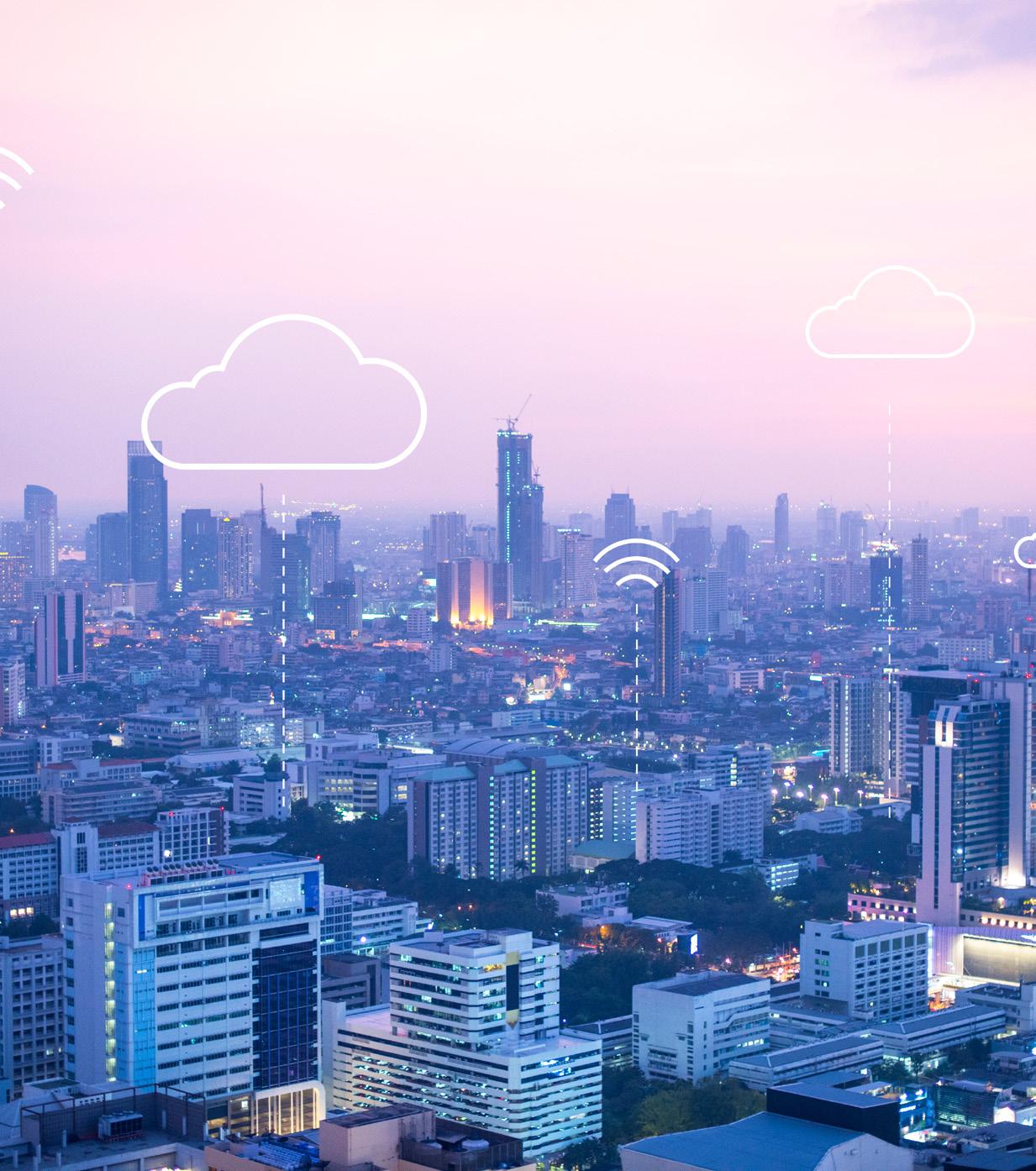
met, but they have helped to usher in a new way of thinking for the development assistance community—one that has succeeded in changing mind-sets about the importance of shared visions and smart, standard measures worldwide.
With 2015 upon us, measuring sticks in hand, the world is taking stock of the MDGs, and reckoning what has occurred—which countries have met targets and which have not, and if not, why not. Faced with threats from global climate change, increasing inequality, rising social insecurity, and other undesirable metrics, the MDGs are giving way to a second round of global governance agreements, the SDGs for 2030 (see Table 1).
The SDGs will take up where the MDGs left off. In the case of water and sanitation, for example, while the MDG target for providing access to improved water sources has been reached, 780 million people still lack this basic necessity, and roughly 80 percent of global wastewater from human settlements or industrial sources is discharged untreated. About one-third of people on the planet drink water that is dangerous to their health, while an even larger number lack adequate sanitation. Indeed, according to the UN, some 2.5 billion people lack the dignity and health offered by access to a safe decent toilet and protection from untreated waste, while approximately one billion people still practice open defecation. This reality against the backdrop of the existing climate change scenario, and the amount of water being wasted globally, could mean access to water will become even more critical. By 2030, almost half of the world’s
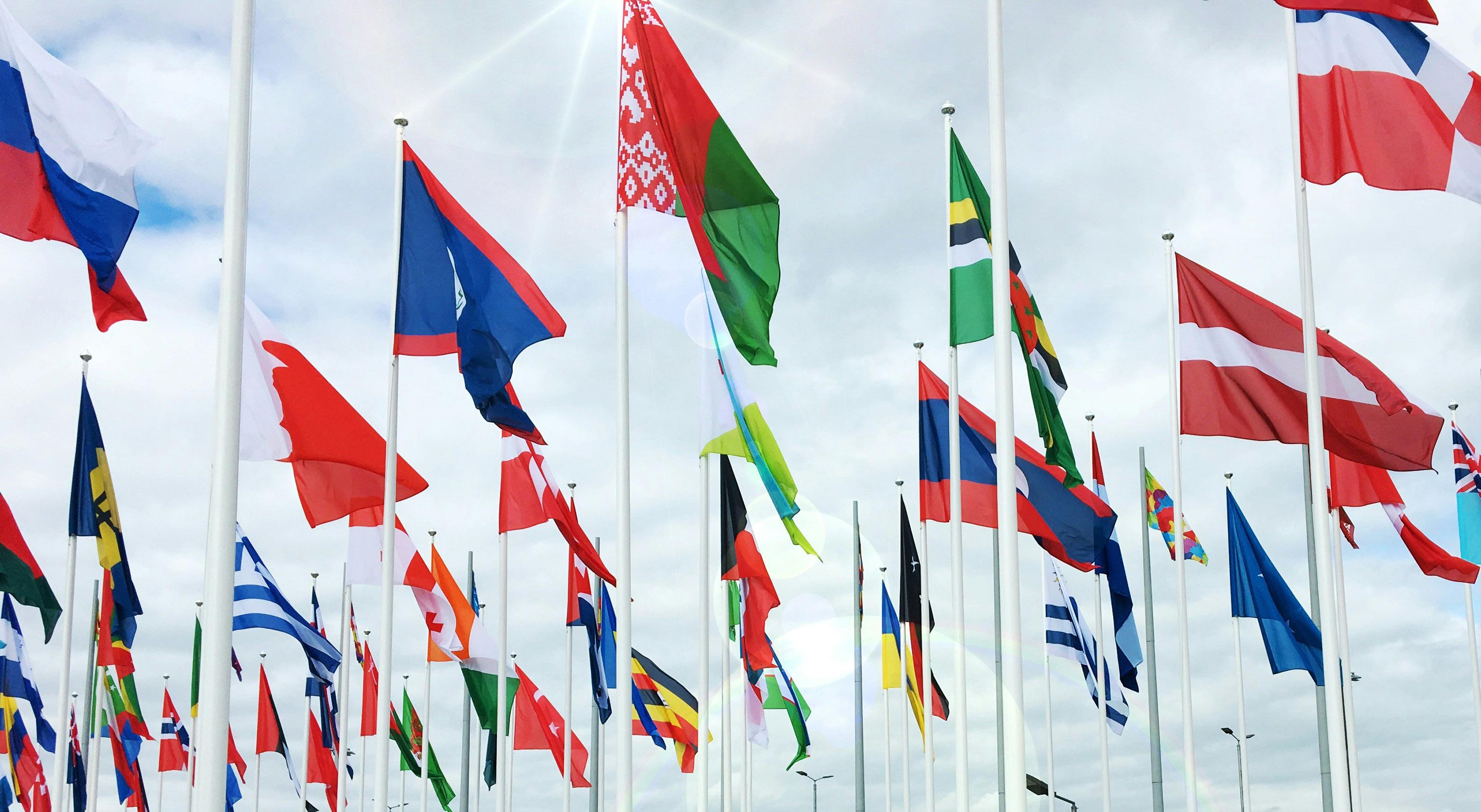
population will be living in areas of high water stress, and demand for water could exceed supply by 40 percent.4 One important success of the MDGs, not often remarked on, is that they heralded a decisive move toward a globally shared vision of common goals for a global future society—a first even for the UN. Not an easy thing to accomplish for an agency designed over twenty years before man first set foot on the moon and gave birth to a new narrative about the common destiny of the human race. That said, it is my contention that some of the failures and unmet targets of the MDGs, and indeed many development assistance projects and policies that were launched but abandoned short of their goals, can be laid at the feet of overreliance on hindsight analysis currently used by the development planning assistance community in policy and project analysis, planning, design, and implementation.
The complex nature of development is such that project designs prepared with an overreliance on historical analysis and future projections from such analysis cannot help but fail. The rapid demise of such industries as film, and the explosive growth of the Internet, mobile banking, social media, and other technological marvels, should convince us that the next fifteen years will not, and cannot possibly be, a repeat or mere extension of the past.
As such, development policy and project planners should employ tools that strive for better problem solving and “solutioneering” that anticipates emerging challenges
and solution alternatives. In other words, more futures thinking and foresight tools must be applied to shaping development policy, planning, and program design. Foresight in development is still a relatively new practice, with most examples of its application being twenty-firstcentury phenomena.
Even though the UN Development Program (UNDP) has been introducing such techniques in some of its publicsector technical assistance activities for years, international financial institutions, such as the World Bank, the African-, Asian-, and Inter-American Development Banks, and so on, who cumulatively account for most major public-sector investments in development worldwide, have been far less eager to adopt foresight approaches in policy and project analysis and design. More recent activities, such as the conference on Development Futures held in Australia in 2013, and the publication by the Society for International Development in partnership with the Rockefeller Foundation, of a special edition of the journal Development focusing on Foresight in Development, suggests a growing awareness of the need for including foresight in development.
The Jakarta administration pledged to make public transport the most used form of transportation in the city by 2030.5
The Millennium Development Goals (MDGs) for 2000–2015
n Eradicate extreme poverty and hunger
n Achieve universal primary education
n Promote gender equality and empower women
n Reduce child mortality
n Improve maternal health
n Combat HIV/AIDS, malaria, and other diseases
n Ensure environmental sustainability
n Develop a global partnership for development
Draft Sustainable Development Goals (SDGs) for 2016–2030
n End poverty in all its forms everywhere
n End hunger, achieve food security and improved nutrition, and promote sustainable agriculture
n Ensure healthy lives and promote well-being for all at all ages
n Ensure inclusive and equitable quality education and promote lifelong learning opportunities for all
n Achieve gender equality and empower all women and girls
n Ensure availability and sustainable management of water and sanitation for all
n Ensure access to affordable, reliable, sustainable, and modern energy for all
n Promote sustained, inclusive, and sustainable economic growth; full and productive employment; and decent work for all
n Build resilient infrastructure, promote inclusive and sustainable industrialization, and foster innovation
n Reduce inequality within and among countries
n Make cities and human settlements inclusive, safe, resilient, and sustainable
n Ensure sustainable consumption and production patterns
n Take urgent action to combat climate change and its impacts
n Conserve and sustainably use the oceans, seas, and marine resources for sustainable development
n Protect, restore, and promote sustainable use of terrestrial ecosystems; sustai ably manage forests; combat desertification and halt and reverse land degradation; and halt biodiversity loss
n Promote peaceful and inclusive societies for sustainable development; provide access to justice for all; and build effective, accountable, and inclusive institutions at all levels Strengthen the means of implementation and revitalize the global partnership for sustainable development

EU leaders committed to reduce greenhouse gas emissions by at least 40%, and increase energy efficiency and renewables by at least 27% by 2030. 6
India will have the largest population in the higher education bracket in the world in 2030, with the number of people aged between 18–23 years expected to reach 142 million accounting for 10% of the total population.7
In September 2014, the UN released a draft of their SDGs comprising seventeen goals currently under deliberation and analysis from which the final SDGs are to be announced in September 2015. These seventeen SDGs now being contemplated are only one thread in the apestry of factors liable to be shaping global history to the year 2030. Of immediate relevance to the SDGs is another thread: the World Bank Group’s stated goal of ending extreme poverty worldwide by 2030, and to promote shared prosperity in developing countries, which will entail fostering income growth for the bottom 40 percent of the population. This effort will involve investing in opportunities for all citizens and reducing inequality. Both are integral to creating prosperity and sustaining economic growth. These goals will be pursued in an environmentally, socially, and economically sustainable manner to ensure that development gains do not harm the welfare of current or future generations.
The fact is that the year 2030 has become a pull year in the articulation of various sectoral, regional, local, and national policies and strategies for development all around the world. The headlines quoted above are just some news and notes taken from various studies and reports that provide context to the stories already being told and beginning to emerge about life in 2030.
Sector studies include, for example, World Agriculture: Towards 2015/2030—An FAO Perspective, which presents the global long-term prospects for trade and sustainable development and discusses such issues as improved food security and sustainability, overall economic and international trading conditions, causes of rural poverty, and the status and future of agricultural resources and technology; REmap 2030, the global road map developed by the International Renewable Energy Agency (IRENA), which provides a plan to double the share of renewable energy in the world’s energy mix between 2010 and 2030; and, UNAIDS: Fast-Track-Ending the AIDS Epidemic by 2030, which sets out strategies for achieving said goals.
Some countries, such as Kenya, Zambia, and Jamaica, utilize 2030 as a target year in official national development plans; while such organizations and companies as the Organization for Economic Co-operation and Development (OECD), Euro Monitor, Ernst & Young (EY), PwC, and others, have issued reports, essays, and articles on anticipated 2030 conditions in countries and regions the world over—from India to Malaysia,

and Chile to sub-Saharan Africa. In the case of cities, official plans targeting 2030 are numerous and include cities across the world from Abu Dhabi to Sydney, Australia; from Stockholm, Sweden, to Provo, Utah; from Oxfordshire, UK, to Nairobi, Kenya; and from Hong Kong to Seoul, Korea.
This activity of long-range city planning is critical given the increasing importance cities and urban regions now play in national life. Indeed, it is expected that forty cities will reach megacity status with more than 10 million inhabitants each by 2030 with the top ten each having at least 23 million each. Overall, approximately 60 percent of the world’s population is expected to live in urban areas by 2030.8 These studies are but a few examples of how sector-based or geography-bound communities are using the year 2030 as a target for defining their vision and version of a desired future. At the same time, technological and social trends point to many changes in how life will be lived by 2030, and how these changes will most likely impact local, national, or global development challenges and options by that time.
Consider noted futurist Thomas Frey’s version of the future: by 2030, the average person in the United States will have 4.5 packages a week delivered by flying drones; they will travel 40 percent of the time in a driverless car; use a 3D printer to print hyper-individualized meals, and will spend most of their leisure time on some activity that has not been invented yet. More than 50 percent of today’s Fortune 500 companies will have disappeared, more than 50 percent of traditional colleges will have collapsed, and India will have overtaken China as the most populous country in the world.
According to Frey, by 2030, more than 80 percent of all doctor visits will have been replaced by automated exams; and more than 10 percent of all global financial transactions will be
conducted through Bitcoin or Bitcoinlike crypto currencies. A Chinese company will become the first to enter the space tourism industry by establishing regular flights to their space hotel; and more than 50 percent of all traditional colleges will collapse, paving the way for an entirely new education industry to emerge. By 2030, we will see the first hurricane stopped by human intervention; forest fires will have been reduced to less than 5 percent of the number occurring today thanks to the use of infrared drone monitoring systems; traditional pharmaceuticals will be replaced by hyperindividualized medicines that are manufactured at the time they are ordered; marijuana will be legalized in all fifty states in the United States and half of all foreign countries; and basic computer programming will be considered a core skill required in more than 20 percent of all jobs.9
Other critical technological changes expected by 2030, according to futurist George Dvorsky, include, for example, (1) Artificially Intelligent Personal Assistants (future more powerful versions of what’s now on our smartphones), (2) Ubiquitous (Unseen) Computers (everywhere in all our clothes, things, goods, services—providing constant feedback on what manufacturers think we need to know), (3) Our Very Own Lab Grown Organs and Meat (end of the waiting for replacement kidneys, and lower carbon emissions as the global cattle boom declines), (4) Industrial-Scale Desalination (now we can drink the ocean’s bounty), and (5) Interplanetary Internet (whether visiting the moon for space tourism or simply in orbit, we will still want to stay in touch). Of special note is the prediction that by 2030, we will see the first sanctioned megascale geoengineering project to address climate change challenges, such as “cloud whitening”—the seeding of marine stratocumulus clouds with copious amounts of tiny seawater particles. 10
Socially, it is anticipated that, by 2030, challenging issues and causes of today, including climate change; lesbian, gay, bisexual, and transexual (LGBT) rights; and abortion, will be footnotes of history, and religious rights, privacy rights, and robot rights may well be the hot-burner issues. Much like predicting the weather, the farther we move into the future, the less accurate our predictions become, so none of these forecasts should be regarded as certain.
Yet, we know by looking back to 2000 how much the world can change in fifteen years. In 2000, Google was only two years old, neither Facebook (2004) nor YouTube (2005) had been invented, a typical mobile phone weighed almost half a kilogram, contained no camera, and had only a tiny screen. Today, we have smartphones as watches, streaming services for movies and music, Video Home System (VHS) rental stores have gone out of business, giant 3D flat-screen TV screens with high-definition (HD) resolution are common, and the Internet lets us view TV shows at our convenience or access media directly, bypassing hierarchical and closed distribution systems. More than 100 hours of video is uploaded to YouTube every minute.11
Forecasts of all kinds directly impact planning. For example, a forecast that states that “By 2030, more than 90 percent of all crimes will be solved through video and other forms of surveillance” challenges us to reimagine our assumptions about the future. As Frey notes, first, we must decide whether we agree that a certain percent of crimes will be solved that way. Then, if we do, we must consider what new technologies and social norms may arise; what new laws and counter technologies may emerge, how police, judges, and lawyers will be affected, and/or what new jobs may be created as result.12
More importantly, forecasts and foresight force us to consider the bigger picture, namely, how does one define a desirable future? The value of this type of futures exploration applied to the policy and programming analysis for the SDGs would be to enliven the narrative about the year 2030, and to help construct narratives that can better inform our understanding of the trends, technologies, or social happenings that will underpin or undermine achievement of the SDGs.
The tendency has been for development planning processes to be executed with limited attention to the emerging changes that will impact global and grand challenges around key issues that require a global solution. The goal of the development futures agenda is to promote applied futures thinking to global development planning and policy analysis as these might unfold over the next fifteen years, and so to enliven the contextual space about life in the year 2030.
Sharing the Challenges of Global Development Futures
We all aspire to reach better living conditions.
Yet, this will not be possible by following the current growth model . . . We need a practical, twenty-first-century development model that connects the dots between the key issues of our time: poverty reduction; job generation; inequality; climate change; environmental stress; water, energy and food security.
Because the goal of development is the construction of some “better-than-now” desired future, how can we best define that future? Today, the current mainstream metanarrative for economic development is based on the deployment of competitive economic growth strategies that depend on promoting consumerism and correcting as required for social and environmental dysfunctions. Furthermore, economic globalization assumes the removal of all barriers to economic activity between nations and a limit to government interventions, so that market forces can drive the global economy. The rise of transnationals that consume, produce, and sell goods all around the globe has eroded the concept of national self-interest.
Instead, the mantras of “survival of the fittest” and “increased dividends to stockholders” that drive such businesses have come to dictate economic activities and political choices and actions worldwide, and thus to determine much of the national and global development agenda. The challenges we face today create rising doubt that expanding the free market and private ownership will create greater economic efficiency and increase social well-being, given the high levels of poverty, extreme economic inequality, environmental damage, ecological crisis in all dimensions, and seemingly unending conflicts over access to natural resources.
Our current economic reality seems directly opposed to the expressed intentions of the SDGs, which clearly seem to imply a value system that desires a world where most if not all people live a life of dignity. And, yet, thefuture we aspire to is definitely not the ones we see posed most often in dystopian blockbuster movies where humans are treated like cattle or live like rats among the ruins of cities in the aftermath of economic collapse, nuclear war, or some other manmade disaster. Nevertheless, many of our unconscious narratives about the future are typically inherited from science-fiction books and movies. So, such TV series as Star Trek and movies as The Matrix, Minority Report, 2012, I Am Legend, The Hunger Games, and Divergent shape our presumptions about the future.
One result of science fiction’s rhetoric is public acceptance of ever-more-advanced technology as normal. If it is true that social change can be safely predicted once 10 percent of a community holds the same vision of reality, then what does
that mean for the SDGs?14 How can we create a compelling vision of the future as defined by successful accomplishment of the UN’s Social Development Goals? If, indeed, a paradigm shift in economic development theories is necessary for humanity to thrive, and if reality is shaped by the stories we imagine, and if, indeed, our future is determined by the choices we make today, then how can we better shape our desired future history? What are the stories we must tell now of the year 2030 and the journey to 2030 that will help us address our global challenges of poverty, equity, and sustainability?
Many today accept that gross domestic product (GDP) is a very poor measure of progress. We say this because cleaning up pollution, paying the costs of high rates of crime, and paying for war and its aftermath all increase the GDP. Yet most people would agree that pollution, crime, and war are not things we consider desirable. So it is clear we would need to move beyond GDP and start measuring the things that produce lasting value for our communities, our societies, and our environment.15
The growing interconnectedness of our society by way of technology has truly given rise to the need for global governance. The foundations of the UN set in 1945 are needed more than ever for globalization has created a planetary ecosystem that is more fragile than ever before. Today, no fewer than 30 issues can be defined as requiring global solutions (see Table 2).
It remains true that all politics is ultimately local, and this fact hampers the ability of the UN to achieve many binding treaties. It is also true that agreements reached by technocrats paid to focus on the big picture do not usually play well to politicians squaring off against fisher-folk or striking coalminers who are simply looking for decent work. Yet, we can take some comfort from Amartya Sen’s contention that, by balancing the individuals’ development needs with those for community or national development, we may find common ground and be better able to identify viable future development strategies.
The construct of a shared future decries the current narrative of competition as the leading motivation for development. Experience shows that unfettered free markets will not produce the desired results of increased equity. How will the development assistance address such actual and looming threats as the end of Peak Oil, or the Youth Bulge, or China’s expanding appetite for energy, or marine litter, or space debris? Who will pay for international development in the looming debt crisis of 2020? What will become of the working poor in 2030 when automatons occupy Main Street? What will become of climate-challenged communities? What will replace GDP as the measure of choice for assessing economic progress? Will the Gross National Happiness Index become the new global standard? How can we enlighten and invigorate the context for discussing and
envisioning life in the year 2030? How can we best organize our storytelling to inform a new narrative about the future we want in 2030? How might we best address and inform a metanarrative that could lead us in the direction we want to go? In sum, our central organizing question is, therefore, How Will We Share the Future?
As stated, I have defined some thirty issues organized into four main questions arising out of a triangulated reading of three texts:
1. Rischard’s 17 High Noon: 20 Global Problems, 20 Years to Solve Them , which proposed twenty global issues that require a global commitment through three questions: “How Will We Share the Planet?” “How Will We Share Our Humanity?” and “How Will We Share Our Rule Book?”;
2. Raworth’s 18 Treatise on the Development Donut, which poses the question, “Can we live within the constraints of nine planetary boundaries, beyond which lie unacceptable environmental degradation and potential tipping points in Earth systems, as well as eleven social constraints/priorities identified by various governments in the run-up to Rio+20?” 19 Raworth contends that below this foundation of resource use lies unacceptable human deprivation in the form of mass hunger, ill health, and poverty. Only between social and planetary boundaries lies the prospect for an environmentally safe and socially just space in which humanity can thrive.
3. The Millennium Project’s State of the Future report, which asks fifteen questions that define what are viewed as true Global Development Challenges. These questions ask, among other things, how decision making will take place.
In defining the four main themes of this special issue, I have added to Rischard’s three questions, a fourth: “How Will We Share Decision Making?” which I consider to be a critical factor that is often overlooked in the construct of global planning. This question addresses fundamental problems of “Who sits at the table?” and how decisions are made— issues of justice, ethics, and value making that are not captured elsewhere but are all critical to global governance.
It takes little imagination to see how a sharing narrative can be applied to address these thirty critical global issues. In simple
How We Share the Planet: Issues involving the Global Commons
n Global warming
n Biodiversity and ecosystem losses
n Ocean life and fisheries depletion
n Deforestation
n Water challenges
n Maritime safety and marine pollution
n Air traffic safety and air pollution
n Sea bed resources
How We Share Humanity: Issues involving a Global Commitment
n Ending extreme poverty (ending housing, sanitation, water, food, energy scarcity)
n Peacekeeping, conflict prevention, terrorism
n Education for all
n Digital divide
n Natural disaster prevention and mitigation
n Global infectious diseases
n Food and energy security
How We Share The Rule Book: Issues Needing a Global Regulatory Framework
n Trade, investment, taxation, and competition rules
n Financial architecture
n Maritime and air traffic law
n Space travel and extraterrestrial engagement
n Biotechnology rules
n Crime—arms, cyber, human, and narco-trafficking
n Intellectual property rights and rules for goods and services
How We Share Decision Making: Issues involving global governance architecture
n Minority and gender rights
n Use of artificial intelligence
n Use of data-gathering technologies
n Use of decision support systems
n Earth rights versus human rights
n People versus corporate rights
n Access to information rights
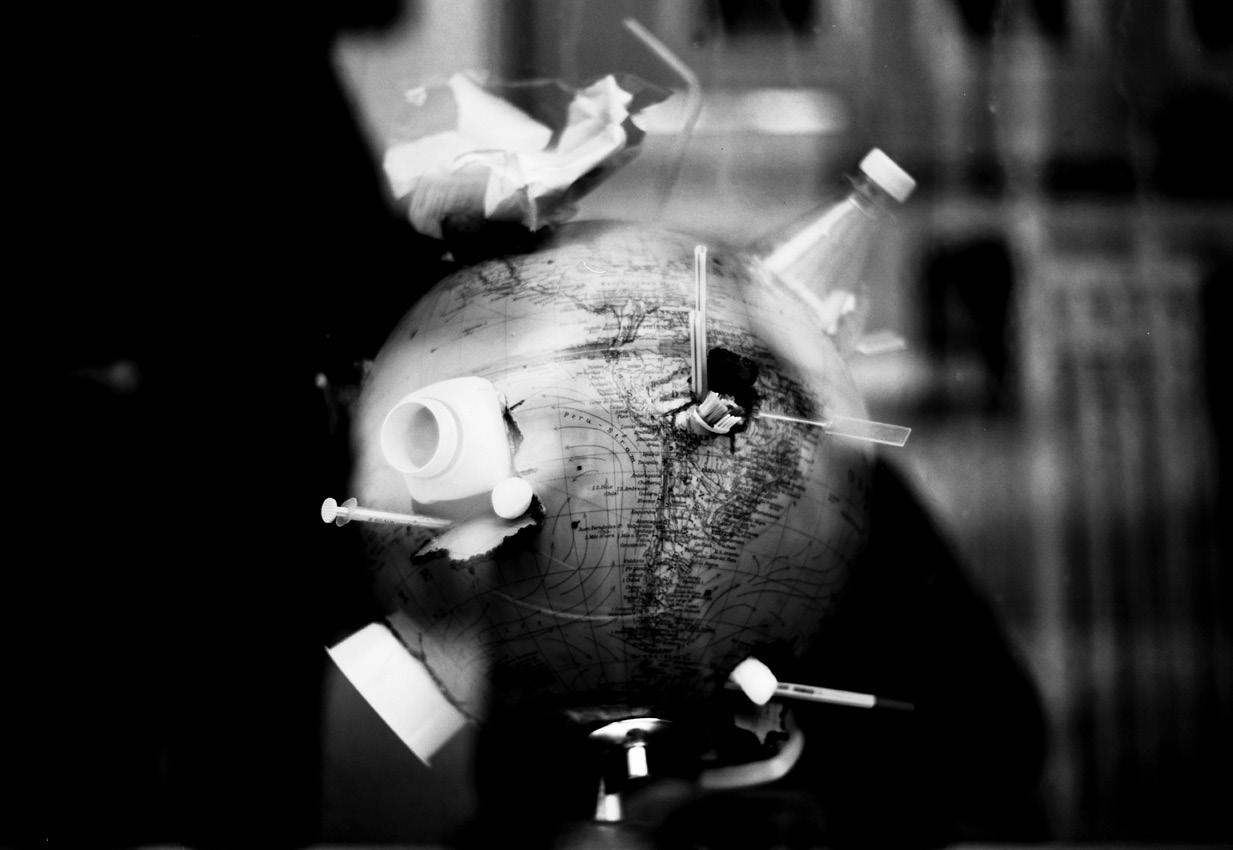
terms, asking the question “How Will We Share . . .” opens the dialogue in ways not usually thought of. Furthermore, we note that the goal of a just sharing of the world’s wealth, power, and resources is fundamental to bridging the gap between rich and poor countries and meeting basic needs for all that are anticipated in the SDGs. Thus, common sense implies that a new narrative based on sharing rather than competing for the world’s resources presents a pragmatic way forward.
EY’s recent study on the future of Africa and the call for inclusive sustainable prosperity there, points up the private sector’s need to embrace shared value as one of five key principles. According to the report, the central premise behind creating shared value is that the competitiveness of a company and the health of the communities and economy around it are mutually dependent. Shared value is a fundamental business philosophy that recognizes that profit and purpose can coexist and be mutually reinforcing.21 For EY, the third largest professional services firm in the world by aggregated revenue in 2012 and one of the “Big Four” audit firms, a philosophy of shared value is supported by making the core purpose of an organization be to build a better working world—that is, a working world with increased trust and confidence in business and capital markets, the development of talent in all its forms, greater collaboration across private, public, and social sectors, and inclusive, sustainable growth at its heart.
The reality is that a future of peace and prosperity is far from assured. In the industrialized world, computerized machinery, robots, and artificial intelligence are improving the productivity of farms and factories, and gradually taking over routine mechanical and office tasks. Although this often leads to major improvements in business productivity, it has quite likely increased un- and underemployment and caused social decay and dislocation for human workers now laid off as “redundant.”
That said, as humans, our survival, if not our thrival, dictates that we will still need to avoid nuclear war, develop cheap clean energy, deflect terrorism, end extreme poverty, save the ocean from irreversible destruction, ensure clean air and water, provide sufficient food for all, and stabilize world population. To enrich our understanding of potential changes between now and the year 2030 so as to better address planning for the SDGs, I invite you to read carefully the narratives that follow and as you read, ask yourself “How Will We Share the Future?”
The author(s) declared no potential conflicts of interest with respect to the research, authorship, and/or publication of this article.
The author(s) received no financial support for the research, authorship, and/or publication of this article.
Notes
1. Dag Hammarskjöld, “An International Administrative Service,” from an address to the International Law Association at McGill University, Montreal, 30 May, 1956. Wilder Foote, ed., The Servant of Peace: A Selection of the Speeches and Statements of Dag Hammarskjöld (London: The Bodley Head, 1962), 116.
2. https://pages.devex.com/future-global-devel opment.html.
3. http://sustainabledevelopment.un.org/focuss dgs.html.
4. http://www.un.org/apps/news/story.asp? NewsID=46214#.VI-WOCvF8hc
5. “Congestion-Free Jakarta by 2030,” JakartaGlobe, December 23, 2013, thejakartaglobe. beritasatu.com/news/…/congestionfreejakarta-by-2030/.
6. http://ec.europa.eu/clima/policies/2030/ index_en.htm.
Nelson 377
7. http://www.ey.com/IN/en/Industries/Indiasectors/ Education/EY-Higher-educationinIndia-Vision-2030.
8. http://esa.un.org/unpd/wup/Highlights/ WUP2014-Highlights.pdf.
9. http://www.futuristspeaker.com/2013/12/33dramatic-predictions-for-2030/.
10. http://io9.com/10-mindblowingly-futuristictechnologiesthat-will-appe-673136756.
11. https://www.youtube.com/yt/press/statistics .html.
12. http://www.futuristspeaker.com/2013/12/33dramatic-predictions-for-2030/.
13. http://unep.org/greeneconomy/Portals/88/ documents/partnerships/PEP%20GE4All%20 Joint%20Paper-Final_2.pdf
14. http://mondovista.com/tenpercent.html.
15. http://www.abc.net.au/news/2014-01-16/ dean-dethroning-gdp-as-our-measure-ofprogress/ 5201564, see also http://b.3cdn. net/nefoundation/800a24dd60a18be7ea_ vem6bnetw.pdf, and http://www.demos.org/ publication/beyond-gdp-new-measuresneweconomy.
16. Jean-Francois Rischard, High Noon: 20 Global Problems, 20 Years to Solve Them (New York: Basic Books, 2003); Jerome C. Glenn, Theodore J. Gordon, and Elizabeth Florescu, State of the Future (The Millennium Project, 2013–2014).
17. Rischard, High Noon.
18. Kate Raworth, Treatise on the Development Donut (2012), http://www.oxfam.org/sites/ www.oxfam.org/files/dp-a-safe-and-justspace-
for-humanity-130212-en.pdf.
19. http://policy-practice.oxfam.org.uk/blog/ 2012/02/can-we-live-inside-the-doughnutplanetaryand-social-boundaries.
20. Kate Raworth, The Development Donut, http:// www.kateraworth.com/doughnut/.
21. http://www.ey.com/Publication/vwLUAssets/ EY-Africa-2030-realizing-the-possibilities/ $FILE/EY-Africa-2030-realizing-thepossibilities. pdf.
Claire A. Nelson , PhD, is Ideation Leader of The Futures Forum, a research and education consulting practice specializing in strategic foresight science, technology, and sustainability engineering. Her current public-interest research focus is to create an intergenerational, intersectoral global transmedia metanarrative about life in 2030 to support the implementation of the Sustainable Development Goals. Before establishing The Futures Forum, she served as a senior technical expert at the InterAmerican Development Bank
2015, Vol. 6(4) 367 –377 © The Author(s) 2015
Reprints and permissions: sagepub.com/journalsPermissions.nav DOI: 10.1177/1946756715569221 wfr.sagepub.com
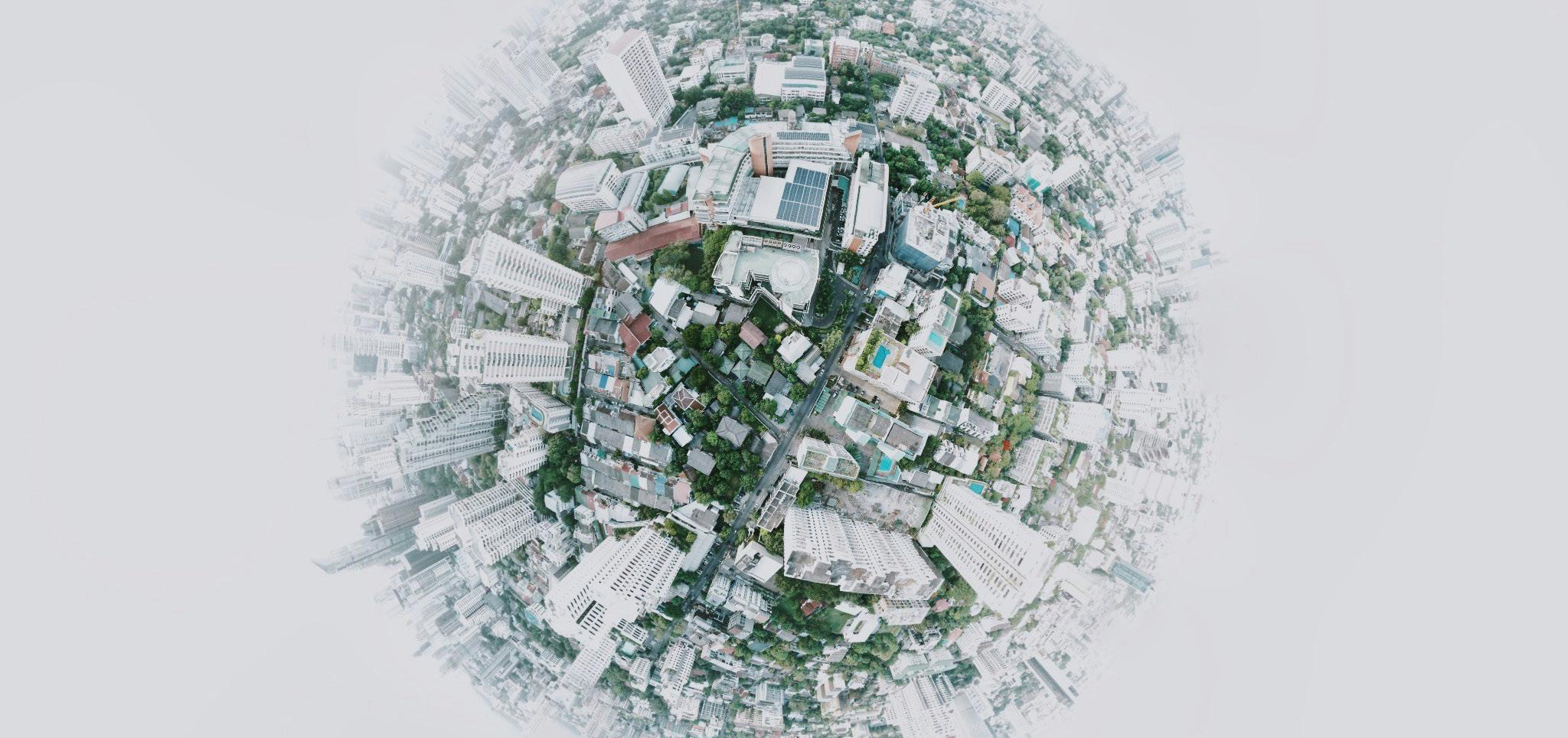
Abstract
This article explores the need for a paradigm shift in the policy and project decision analysis process of the development assistance industry in order to meet the challenges of global governance. The essay argues that such shifts will require the intentional use of narrative foresight to inform the leadership and engage followers in a shared vision of the desired future, and lays out a call to action for decision makers in the global commons that envisages seven key elements.
Keywords systems analysis, global decision making, narrative foresight, global development challenges

[March 22, 2030
Today, World Water Day 2030, over 3,000 members of the water users community including some 300 CEOs from the world’s biggest water users are gathering in Dubai to discuss the global progress thus far achieved toward implementing the UN’s 2030 water sustainability goals. The Water Resources Group (WRG) 1 was established in 2008 as a neutral platform that partners with government agencies, the private sector, and other watersector specialists to help accelerate reforms that ensure sustainable water resource management for the long term. So far, water planners from over 80 countries have been invited to participate, and all have benefitted from the skills of the WRG in bringing together new actors, providing water resource analysis in ways that are easily understood by politicians and business leaders, and helping to implement projects that have brought water sufficiency to 80% of the countries participating.
The adoption of a Global Water Footprint Standard 2 by over 1,000 cities and major companies globally set in motion initiatives on
personal responsibility that led to the use of water footprint apps that have reduced water consumption by 25% in over 100 countries. Ghanaian engineering firm TinkerToo, inventor and manufacturer of the iSaveWater App which has made household-level water footprint calculations available worldwide will be named the winner of this year’s Stockholm Water Prize. 3 Based on research conducted at Harvard in 2014, the advent of a commercially-viable organic flow battery that relies on the electrochemistry of naturally abundant, inexpensive, small organic molecules called quinones (replacing scarce vanadium), has similarly made possible the rapid adoption of solar and wind energy on a global basis. Consumer-sized solar power arrays are now the new standard in India, China, and much of West Africa, reducing the demand for water used in power generation by over 30%
We expect that the well over 500 companies will be present to participate in today’s event. The water supply gap once expected to exceed 40% has been cut to only 12% and the world is drinking deeply.]

The global challenges of “How We Share the Future” will be determined one person at a time. The challenges embedded in addressing this question through the themes of (1) How We Share Our Planet, (2) How We Share Our Humanity, (3) How We Share Our Rule Book, and (4) How We Share Our Decision-Making, though requiring a global response and commitment, will be lived and addressed one person at a time. What will it take to create the conditions for enough of us to respond in such a way as to make a positive difference?
According to Fast Company’s website Co-Exist, 4 despite all the economic, societal, and environmental obstacles thrown their way, millennials the world over still believe that things can change and that business in particular can move the world into a better place. A review of “The Future We Want,” an online project of the United Nations, reveals that most people want to live well by Western European standards of well-being. A National Intelligence Council Report predicts that demand for food will rise at least 35 percent by 2030, while demand for water will soar 40 percent, and that many countries probably will not have the wherewithal to avoid food and water shortages without massive help.5 The report also states that mankind is not necessarily headed into a future of scarcities, but that policymakers and their private-sector
1 The Futures Forum, Washington, DC, USA

partners will need to be proactive to avoid such a future. In other words, addressing the coming challenges will require a new type of conversation between global goal-setters and national, local, and personal decision-makers.
Creating positive goals such as the Sustainable Development Goals (SDGs) will help. After all, the 2015 Millennium Development Goals (MDGs) created a shift in the decisionmaking activities of the United Nations, the international financial institutions (IFIs), and many of the bilateral, regional, and national agencies that make up the global development apparatus. Project designers the world over had to contend with targets, monitoring and evaluation, and impact assessments that clearly did improve the project cycle process. But the MDGs did not produce all of the fundamental changes needed to create a complete paradigm shift—now more needed than ever. The Draft SDGs set seventeen goals and 169 specific targets to be achieved by 2030, which represent a clamor for real change.6
Moreover, there is agreement on the need for change among groups as disparate as the World Economic Forum and the World Parliament of Religions. Accomplishing this change, however, will require much more than business-as-
Corresponding Author: Claire A. Nelson, PhD, The Futures Forum, Washington, DC, USA.
Email: thefuturesforum@gmail.com

usual in the form of global treaties, resolutions, and policies coming down from on high, which are, more often than not, impossible to implement for democratically elected national governments to whom the adage “all politics is local” is a very real and often limiting factor.
Achieving global decision-making that is more teleologically effective by 2030 will require a paradigm shift that allows global decisions and goal-setting to be more easily made relevant to the realities of local decisionmaking, based on the power of the vote. What is needed then is global literacy and planetary consciousness among leaders at all levels ofsociety. This is not currently the norm but can help enormously to set sustainable policies and practices, and establish new behaviors of choice. We will need to learn to live individually, in such a manner that the collective impacts of our choices fall within Kate Raworth’s development doughnut of defined planetary boundaries and social constraints. 7 The seeming incongruities between the behaviors recommended in various reports and studies on one hand, and our actions as private citizens on the other leaves us to ponder just how these contradictions can be resolved.

The reality is that much of the apparatus constructed to address global problems has remained static for the last seventy years, rendering it equally unsuitable for dealing with new problems that have emerged and with old problems that have become more complex over time. True, there has been some tinkering around the edges, marked by efforts such as the formation of new committees and councils and high-level working groups established to deal with new challenges; and consultations and online forums to encourage more civil society participation and greater transparency. Yet it is clear as we hurtle toward the future that our decisionmaking systems remain largely inadequate to the task. Is it our methodologies, our institutions, or the decisionmakers themselves that fail us; or is it some function of all of the above? Are we as humans reaching the limits of our decisionmaking capability? Or are the complexities of the global systems we have sought to tame to our use simply more than any carbon-based intelligence can hope to manage?
It has been said that we are now living in the Anthropocene Age, a time of global literacy andplanetary consciousness, when the interdependence and essential interconnection of all humankind with the Earth and all its systems are at last
becoming clearly recognized as vital elements in the global development process. Global literacy and planetary consciousness demand a change from the style of leadership that thrives on competition to one that instead seeks collaborative win/win outcomes. According to Ervin Lazlo, we need to undertake another Apollo mission, not on the plane of technology this time but on the plane of culture. 8 Without an evolution of our individual and collective consciousness, it is unlikely that we could avert deepening economic, social, and cultural conflicts and ecologic breakdowns and ever be able to benefit from the abundance imagined by technooptimists like Peter Diamandis et al.
The technology needed to avert impending disaster is said to exist. What seems to be lacking is the equally necessary emotional and intellectual maturity. It is this evolution of consciousness that can help us create a shared vision of a future that will ensure our continued ability to not only survive but to thrive— our “thrival” if you will. But we know that such a shift in consciousness can only take root, if at least 10 percent of those charged with the responsibility of leading our global commons for the common good share a common vision of that good. How can we awaken, access, and groom this global intelligence and insight? How can we develop the capacity to truly interpret the data and information we have available, and best make some of the sensing decisions that we will need to make? At the technical level, applying the lens of foresight and futures thinking to global development challenges will contribute positively to addressing these complex problems. The systems of systems that constitute most global challenges, be they ocean pollution, fisheries depletion, or food supply chains, require systemic analyses not generally found in the twodimensional economic cost–benefit or environmental impact analyses used to inform decision-making in the development assistance industry. Not everything we need to know and care about can be adequately measured in quantitative terms. Futures explorations and ensuing scenarios tell stories of reality that help us to see possibilities and dynamics that would otherwise remain hidden.
At the level of meaning, the narrative approach of scenario development can not only help illuminate complexity but also help describe planning solutions and how these can be realized. Precisely because the underlying beliefs that drive our current economic system are so pervasive, a first priority is for global development practitioners to inculcate a fundamental shift in the way we see our challenges. A key means to effect such a shift is through the use of narrative—by addressing our global challenges through the lens of a shared future, a shared planet, a shared humanity, a shared rule book, and shared decisionmaking. By using the language of sharing, we begin to deconstruct the old paradigms of conquest and competition, which no longer serve our collective good. There has to be an intentional deconstruction
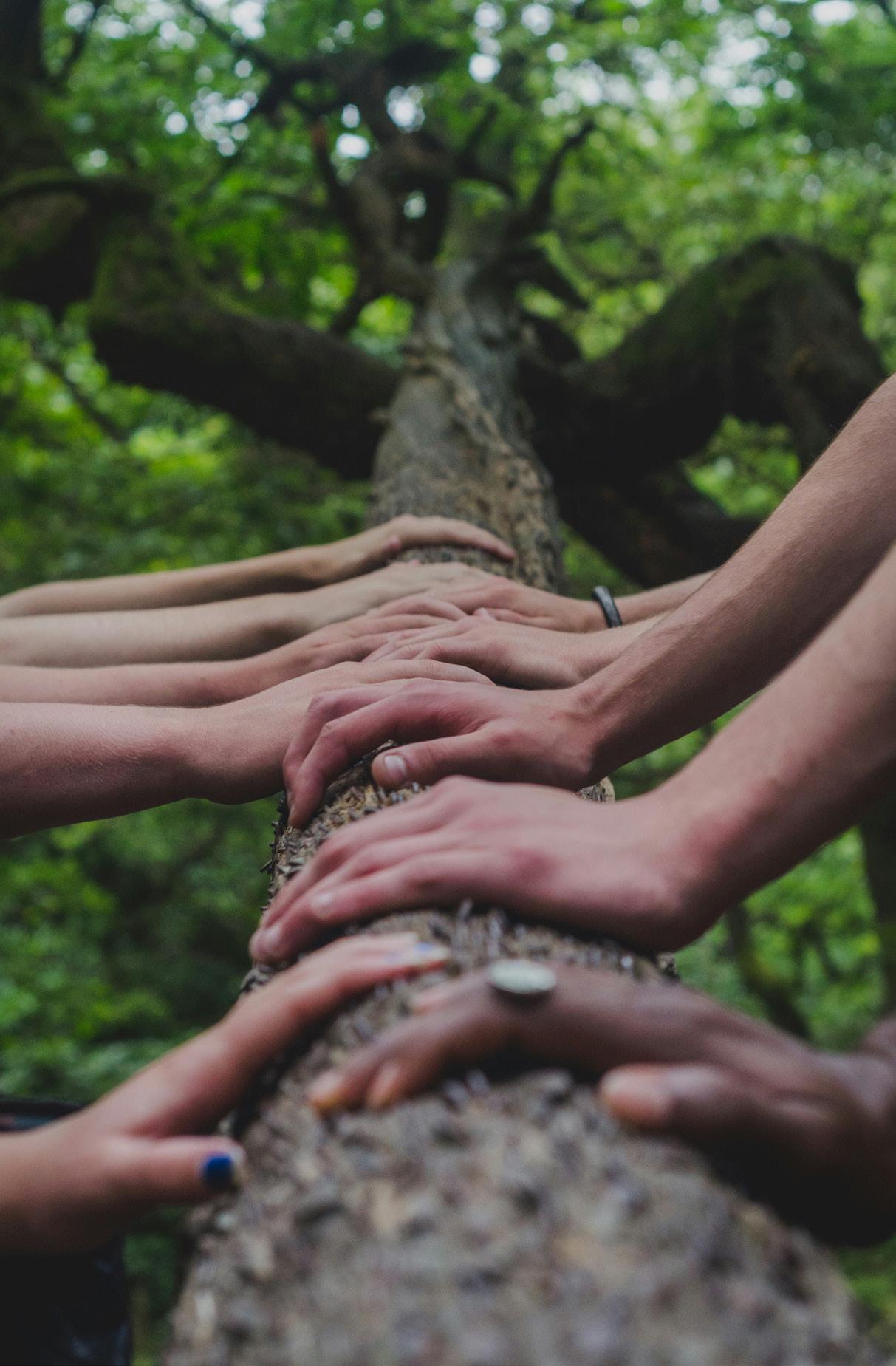
The reality is that the twenty-first century provides us with new opportunities. We are the first generation that has access to scientific discoveries that tell us how the universe and our Earth evolved. Rather than the purely mechanical, material world of the nineteenth century, twentieth-century technologies showed us that we are part of a dynamic, living process, in which clear borders do not exist and unfettered growth through competition driven by insatiable consumption is cancerous. Through our globalized technologies, we can now develop global storytelling capable of shaping planetary myths that lead to informed decision-making in keeping with our interconnected and interdependent reality. Through such storytelling, the leadership elite of the twenty-first-century global commons can themselves be transformed into the vanguard of global literacy and planetary consciousness.
We know intellectually that we need to move from the current development narrative of Sustained Economic Growth, as

measured by Gross National Product, to one that recognizes that the path to human economic thrival must be based on principles of Environmental Sustainability, Economic Justice, Biological and Cultural Diversity, People’s Sovereignty, Intrinsic Responsibility, and Common Heritage9—in other words, that global decision- making must benefit people and nature everywhere if it is to succeed. We know intellectually we need to move from the belief that the primary responsibility of government is to help advance commerce and enforce the rule of law with respect to property rights and contracts, to a belief that the highest purpose of the human economy should be to meet the needs of people. But how can this be accomplished?
One way is to employ new indices and set new benchmarks as “norms” that more accurately reflect the importance of the pursuit of happiness and human well-being in global development. A 2012 high-level meeting in Bhutan on “WellBeing and Happiness: Defining a New Economic Paradigm” attracted more than 800 participants, including political and government leaders, representatives from international organizations, civil society organizations, media, and business, as well as leading economists, scholars, academics, and spiritual leaders from the world’s major faiths. Together, these men and women carefully considered the concepts
of well-being and happiness, ecological sustainability, efficient allocation of resources, and fair distribution as the four dimensions of a new global economic paradigm.10 But developing a scale to measure Gross National Happiness is not any easier than devising one to pinpoint the negative impacts of gross income inequality. Paradigms and narratives are resistant to change because they are deeply embedded stories. We do not often reflect on the way we think. What we need then is not so much a new index, but a new story.
In a typical bureaucracy, initiating change requires that key decision-makers have control over four critical elements: (1) Vision Alignment; (2) Responsibility; (3) Accountability; and (4) Authority.11 But how does one undertake change in a global hydra-headed system of systems that is simultaneously attempting to address seventeen distinct, yet interrelated goals? The potential role of foresight in improving development outcomes cannot be overstated—from datadriven forecasting to generating collective intelligence via crowdsourcing, and from gaming and quantitative modeling to scenario writing, strategic explorations of the future of anticipated and/or desired change is the best way to clear a path for said change.
Vision Alignment and buy-in can be internalized through futures narratives. The advantage and added value of specific changes can also be internalized through narrative. No change is without risk. But both the changes envisaged and their attendant risks can be explored simultaneously through narratives that contain sound contingency and exit planning. Exploring such changes requires new types and levels of accountability on the part of the actors in the system. These may be addressed through future scenarios and narratives that explore how various actors’ authority and responsibilities may be assigned and managed. Inculcating a paradigm shift to a new consciousness is basically about storytelling.
The type of “futures thinking” that is rapidly becoming common in the private sector is still relatively rare in development planning and execution. Management and strategic consulting has always been about helping decisionmakers to prepare for the future. The advent of cheaper software is making simulation and other techniques more easily accessible. Private-sector companies are working to gamify and crowdsource geopolitical problems. New jobs such as chief resilience officers are currently being created to oversee the future challenge-proofing of 100 cities. Think tanks and nongovernmental organizations (NGOs) are using foresight engines to engage thousands of citizens in reimagining the future of governance, cities, peacebuilding, and so on.12
For example, the Institute for the Future (IFTF) Catalyst for Change project involved 1,600 participants who generated more than 18,000 ideas for paths out of poverty which can
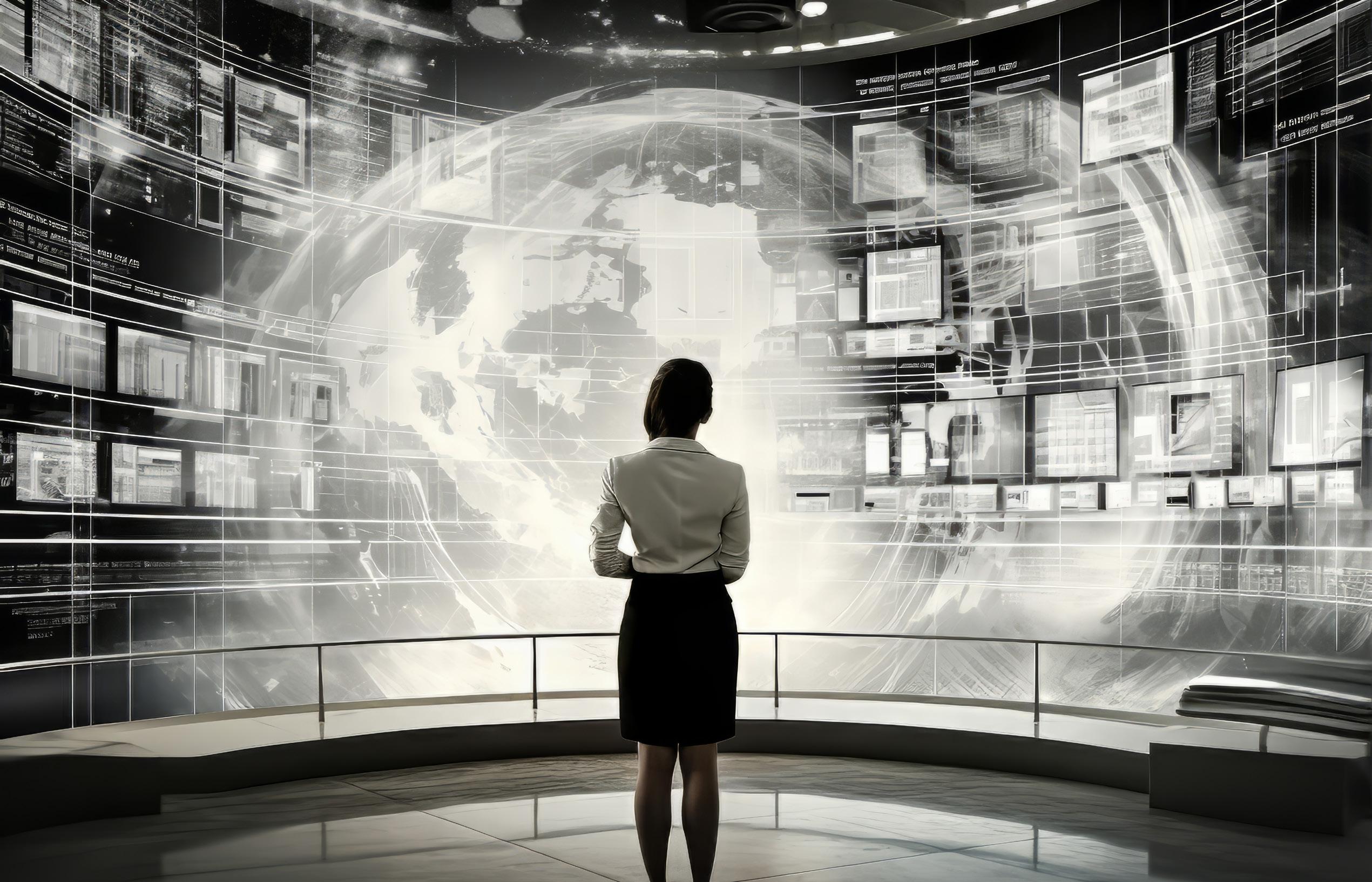
inform the future design processes.13 In forecasting research, such as the Good Judgment Project, 3,000 regular citizens are making forecasts on a range of issues—from political developments in North Korea to Venezuelan gas subsidies— that test our ability to collate collective intelligence accurately.14 The main question is “How can we link these activities to the futures knowledge acquisition needs of global development practitioners?”
How do we engage the over 600,000 professionals in the international development assistance industry active in networks such as Devex, 15 and the thousands more employed in local, national, regional, and global NGOs, corporations, and international agencies that constitute the main actors in the global commons? How do we develop global commonsense problem solving for the global commons and the common good?
The development assistance industry will need to do things differently. It will need to tap into distributed knowledge that goes well beyond information from traditional sources like experts and national data and instead hear directly from people and communities through sensors or social media around the world. In responding to findings, the industry will also need to explore more flexible organizational structures
with mechanisms that can act upon near-time events and not be locked into five-year plans that may be rendered obsolete after two years. It will need to define and measure shorter feedback loops, while continuing to monitor evaluation cycles over the long term, so that it can adjust to scenarios as they actually emerge. It will need to provide and evolve on-thejob training and decision support analysis tools—such as the Global Futures Intelligence System of The Millennium Project, which help provide a pathway for increasing global futures literacy.16
How we will address the global challenges that require a global commitment will require reimagining global leadership systems and mind-sets. The following seven actions are proposed as ways to promote development futures thinking, global literacy, and planetary consciousness that will all be needed for leadership development by 2030:
1. Mandate on-the-job learning/training on systems thinking and foresight for all existing staff of international development agencies;
2. Ensure that all economists in graduate programs heading toward careers in
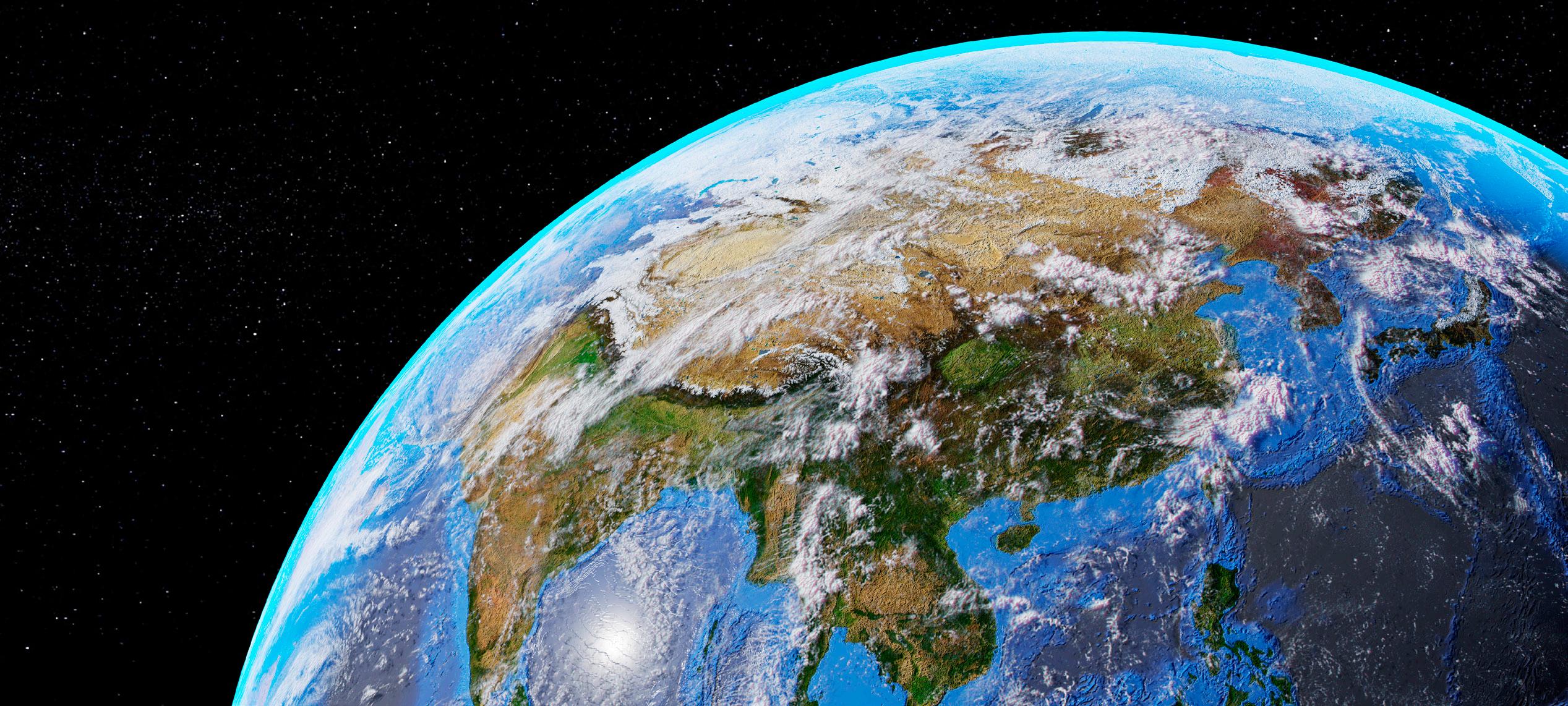
development acquire futures literacy and global literacy through required basic courses in foresight and scenario writing;
3. Develop a curriculum in global studies or globalism, and make it a required elective for all development-related college majors;
4. Make Futures Thinking a required course in all International Studies and International Development courses. [In fact, extending compulsory futures education even more broadly to students pursuing many traditional majors could prove extremely valuable in sensitizing broad segments of the population to the value of long-term planning.]
5. Establish Futures/Foresight Capacity as a cross-functional support team in all international agencies;
6. Establish a Development Futures Community of Practice through groups such as the Society of International Development, World Federation of Futurists, and the World Future Society;
7. Develop an Asset Map and Database of Studies, Vision Statements, and other Mental Models of the Year 2030, and use these to construct a Meta-Narrative that is shared through transmedia storytelling
to diverse stakeholders affected by and involved in the global development assistance industry.
It should be noted that the seven actions proposed do not constitute all that would be necessary but are sufficient to begin the transformation of leadership called for. In charting a way forward to changing the paradigm and constructing a new global narrative, it should “be noted that Ivana Milojevic in the Journal of Futures Studies draws useful parallels between futures studies and narrative therapy. In psychiatry, narrative therapy is used to deconstruct destructive personal stories and reinterpret them in ways that empower the subject, effec- tively enabling them to rewrite their own life story. Futures discourse is the core of narrative therapy. Strengthening positive stories in a supportive therapy group enables people to redirect their efforts to realize their goals.17 In the same way, futures narratives can address our common stories as a human family. We can create positive stories of anticipated futures in supportive communities of practice that enable us to better realize our goals.
The future of global development coopera- tion will not be an extension of the past. The traditional aid model—a resource transfer from North to South—is changing. There are more development actors today, and increasing diversification of finance, shaping of rules and policies, and how we share knowledge for development. Eradicating poverty has become a more complex endeavor. Today, there are only thirty-six low-income countries left in the world, and two-thirds of the world’s poorest people live in middle-income countries.18
For much of the last seventy years, efforts to protect the global commons and expand the common good have been managed by a leader- ship elite more often chosen
on the basis of political ties than management skills or subject matter expertise. In spite of its detractors, we have maintained a fairly stable international system, headlined by the United Nations— with laws, treaties, and agencies such as the United Nations Conference on Trade and Development (UNCTAD), Food and Agriculture Organization (FAO), and so on, intended to govern every aspect of planetary systems. From international currency and cen- tral banking regulations (the International Monetary Fund [IMF]), to international trade by way of the World Trade Organization (WTO) and World Bank, World Health Organization (WHO), International Atomic Energy Agency (IAEA), and so on, wherever there is an issue of global import, there is an” agency or working group or treaty assigned to govern it.
Furthermore, with the rising democratization around the world and the influence of increasing information transparency provided by the Internet, the role of civil society and global citizenry is becoming ever more important. Global decisionmaking has been done usually by majority rule (one country— one vote). But with technology amplifying the voice and potential role of citizens in the global hinterlands, it is anyone’s guess how the role of citizen participation may emerge and impact the decision-making and participatory development processes over the next fifteen years. As we look ahead to 2030, it is clear that meeting the thirty global challenges now emerging and achieving the desired SDGs will require that we change the way we live with ourselves, with each other in community, and with the Earth. By asking and answering the question “How Will We Share Our Future?” we affirm the move to a sharing philosophy that recognizes our interdependence and its relevance to our mutual survival. It is my contention that the stories we tell ourselves have created the world we live in today. We have been telling stories since time began. I do believe that the stories we tell have and continue to impact the ongoing wave of social, moral, and ethical changes. Creating narratives that address sharing the future will, I hope, contribute to the shaping of a planetary consciousness that helps to shape a global civilization in a world we can share equitably, sustainably, peaceably, and joyfully.
Humanity’s legacy of stories and storytelling is the most precious we have. All wisdom is in our stories and songs. A story is how we construct our experiences. At the very simplest, it can be: “He/she was born, lived, died.” Probably that is the template of our stories—a beginning, middle, and end. This structure is in our minds. (Doris Lessing)19
The author(s) declared no potential conflicts of interest with respect to the research, authorship, and/or publication of this article.
The author(s) received no financial support for the research, authorship, and/or publication of this article.
Notes
1. http://www3.weforum.org/docs/WEF/WRG_ Background_Impact_and_Way_Forward.pdf.
2. http://www.waterfootprint.org/?page=files/ GlobalWaterFootprintStandard.
3. http://www.siwi.org/prizes/stockholmwater prize/.
4. http://www.fastcoexist.com.
5. http://globaltrends2030.files.wordpress .com/2012/11/global-trends-2030-november 2012.pdf.
6. http://sustainabledevelopment.un.org/focussdgs. html.
7. http://www.kateraworth.com/doughnut/.
8. http://cejournal.org/GRD/Laszlo.pdf.
9. http://dailyrevolution.com/wednesday/principles. html.
10. http://sustainabledevelopment.un.org/index.php ?page=view&type=400&nr=617&menu=35.
11. https://myattleadershipmatters.wordpress .com/tag/n2growth/page/3/.
12. http://europeandcis.undp.org/blog/2014/04/04/ the-future-is-now-heres-how-were-planningtocatch-up/.
13. http://www.iftf.org/our-work/global-landscape/ catalysts-for-change/catalysts-forchangeproject/.
14. http://www.goodjudgmentproject.com/.
15. https://pages.devex.com/future-global-development. html.
16. http://www.millennium-project.org/millen nium/GFIS.html.
17. Journal of Futures Studies http://www.jfs.tku .edu.tw/?page_id=2793.
18. https://www.die-gdi.de/briefing-paper/article/ beyond-aid-and-the-future-of-developmentcooperation/. 19. http://dorislessing2014.com/tag/white/.
Author Biography
Claire A. Nelson , PhD, is Ideation Leader of The Futures Forum, a research and education consulting practice specializing in strategic foresight science, technology, and sustainability engineering. Her current public-interest research focus is to create an intergenerational, intersectoral global transmedia metanarrative about life in 2030 to support the implementation of the Sustainable Development Goals. Before establishing The Futures Forum, she served as a senior technical expert at the InterAmerican Development Bank

“THE FUTURE IS SHARED SPACE. THE STORIES ABOUT THE FUTURE WE SHARE NOW ARE THE FOUNDATION STONES OF THE FUTURE WHICH WE WILL INHERIT.”

- Claire A Nelson, SMART Futures for a Flourishing World.
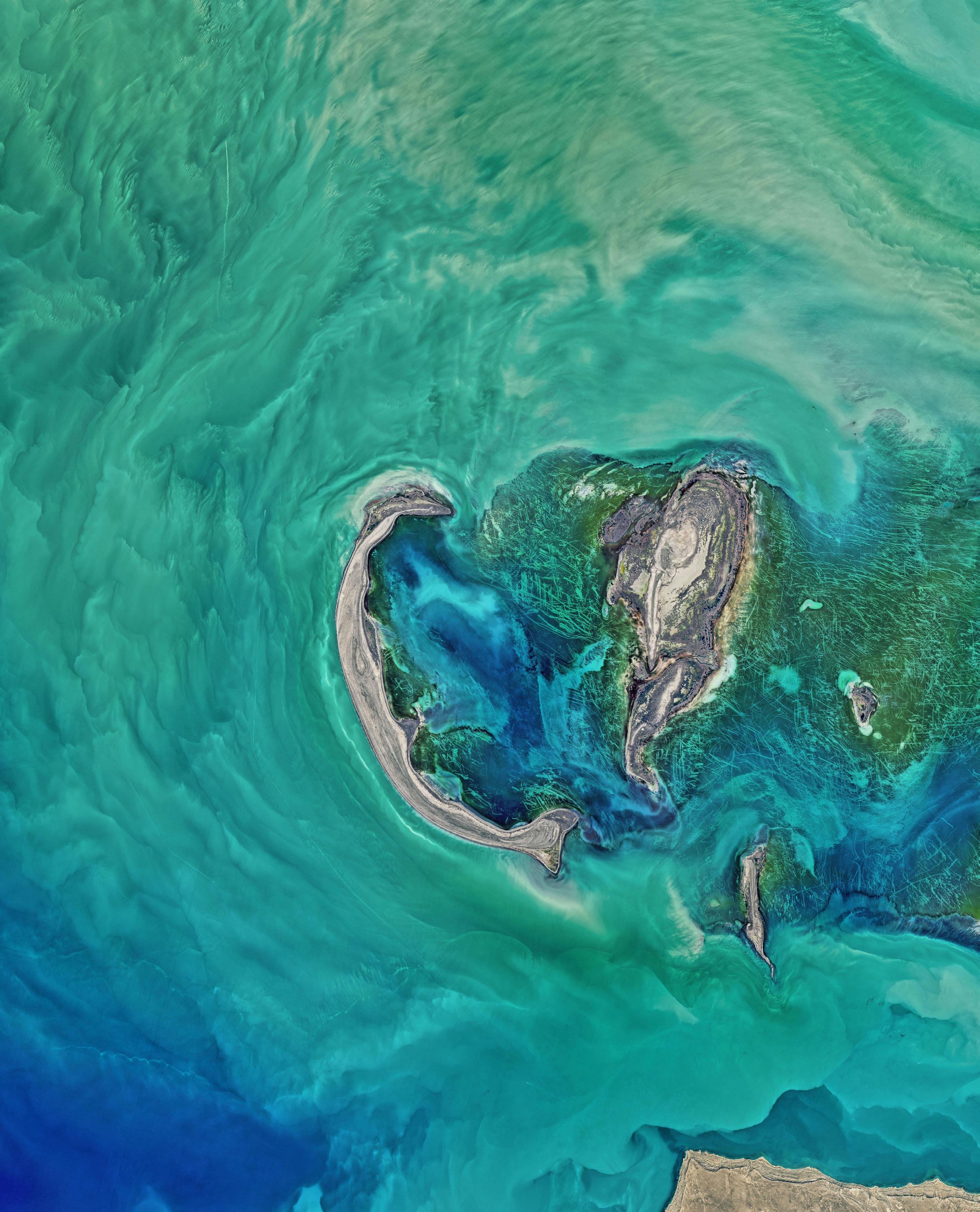 Layout by Jeremae Jumao-as
Images from Unsplash & Freepik
Layout by Jeremae Jumao-as
Images from Unsplash & Freepik